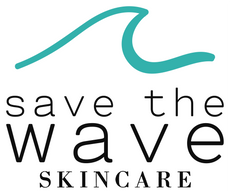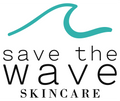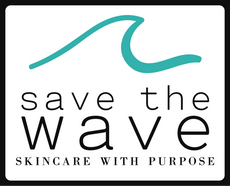aging ·
anti-aging ·
antioxidants ·
avocados ·
blog ·
cruelty free sincare ·
cruelty free skincare ·
diet ·
green ·
green living ·
groceries ·
health ·
healthy living ·
healthy skin ·
nutrition ·
organic skincare ·
plastic free ·
retinol ·
rosacea ·
save the planet ·
save the wave skincare ·
skin ·
skin cancer ·
skinspiration ·
SPF ·
sunblock ·
vegan skincare ·
wrinkles ·
Let’s talk about how to protect that skin!
Spring has sprung and we are all looking forward to warm and sunny days ahead!
Working in dermatology for close to 20 years, I have seen first hand the damaging effects of ultraviolet radiation (UVR) - both with skin cancers and premature aging of the skin.
All of us have had more sun exposure than we intended and many of us have had one or more sunburns in our lives. These daily exposures put us all at risk for sun damage and skin cancers. How can we be prepared and protect ourselves?
First some background. The most common ultraviolet rays we will hear about are UVA and UVB. UVB is primarily responsible for the “burning rays” - the rays that make us red. Protection from UVB is rated with a Sun Protection Factor or (SPF). Meaning, if it takes us 5 minutes to turn pink with no protection , it will take 30x longer (150 minutes) to get a burn with a SPF 30.
Remember, these studies are done in a laboratory setting and “human error” in application technique gives us a lot less protection, which is why I recommend reapplication every 1-2 hrs while enjoying time outdoors.
Secondly, while UVA rays don’t cause burning, they penetrate much deeper into the skin and are responsible for the premature aging/wrinkling of the skin and along with UVB, synergistically add to the carcinogen effects of the sun.
I encourage everyone to wear a broad spectrum (absorbs both UVB and UVA rays) mineral based sunblock EVERY single day - be it winter/spring/summer/fall, on a sunny OR cloudy day. Make it a habit everyday and you will not be unprepared.
Find a product that has zinc oxide and/or titanium dioxide as the active ingredients. These are minerals that sit on the skin and provide a PHYSICAL barrier against sun, reflecting both UVA and UVB rays, hence sunscreens that contain these ingredients are often called physical sunscreens. Compare this to chemical sunscreens that have multiple chemical ingredients that each absorb into the top layers of the skin, and “absorb” a small portion of the ultraviolet spectrum - that is why several ingredients are required to give you broad spectrum coverage.
Mineral-based sunscreens are a great daily choice because of their broad spectrum coverage, but also are a good option for patients who may be sensitive to the active chemical ingredients in many sunscreens. Also, we know that several chemical sunscreen ingredients, specifically oxybensone and oxtinoxate, have been shown to be dangerous and deadly to our delicate coral reefs and have been banned - or are being moved to be banned from many coastal communities!
In the past, many patients have complained that zinc and titanium based products are thicker and less cosmetically elegant - but newer formulations are better than ever, giving us options for light and elegant mineral based sun protection!
In the past, many patients have complained that zinc and titanium based products are thicker and less cosmetically elegant - but newer formulations are better than ever, giving us options for light and elegant mineral based sun protection!
So apply a mineral based physical sunblock everyday before heading out and don’t forget to reapply and along with protective clothing, your skin will stay happy and safe for years to come!
Any questions? Just ask!
-Elena.







Leave a comment